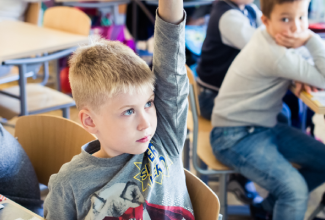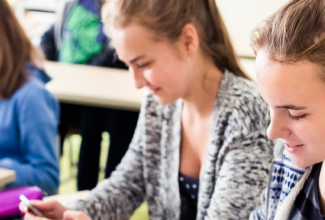The learning process itself is based on values like:
- Responsibility – people are aware that learning and self-development are their own conscious personal choices as well as responsibility.
- Necessity – the learning process is guided by the individual’s personal interests and abilities and supports their development, whilst keeping in mind the requirements of the labour market.
- Opportunities – a system of lifelong learning offers high quality, contemporary and flexible learning opportunities that are tailored for individual needs.
Lifelong learning begins with general education. There is a common system applied for general education in Estonia. In practical terms, this means that a common curriculum is taught in all levels of education. The length of the study period consists of at least 175 teaching days (35 weeks) and four intervals of school breaks.
General education is divided to pre-school, basic and upper-secondary education.
Pre-school education
Pre-school education is delivered to children between the ages of 18 months to seven years in especially dedicated educational institutions.
The main aim of the early stages education is to support the child’s family through fostering the child’s growth and development by taking into account their individuality. Facilities for the pre-school education are provided by the local authorities at the request of parents. Pre-school children’s institutions follow state curricula that is specifically formulated for the purpose. Children who have passed the pre-school curriculum will be issued a certificate that records the child’s development. The parents will submit this certificate to the school where the child will be enrolled.
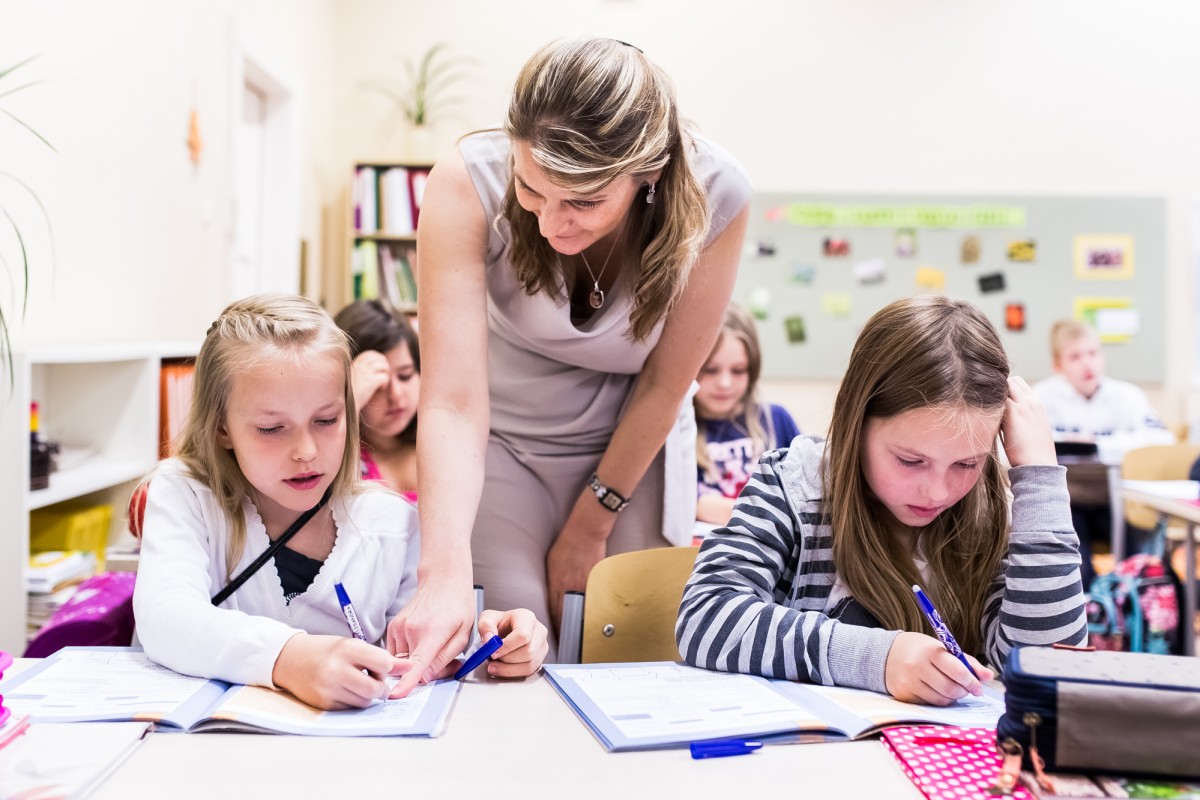
Parents wishing to enrol their children in a pre-school institution should check with the local authorities about the admission requirements and the documentation required for enrollment. Municipalities are obliged to guarantee a place in a pre-school institution of the child's residence for all children between 1.5 and 7 years of age.
Parents can choose freely the pre-school institution, they want to send their child, provided there are places available. They can also choose the type of pre-school child care institution – private or municipal. Pre-school child care institutions must hold an education licence, which can be verified at the website of the Estonian Education Information System (EHIS).
Private pre-school child care institutions receive support from the municipalities at the amount determined by the municipality. When enrolling children in pre-school child care institutions, priority is given to children who live permanently in the same municipality, followed by children whose parents work in the catchment area. Children from other areas are accepted if places are available. Registrations should be submitted to the pre-school child care institution as early as possible.
Parents of children under the age of 4 may choose child care provision instead of pre-school child care institution by submitting a relevant application to the local government.
According to the law, the municipality has the right to ask an attendance fee of the child care institution from the parents, but not more than 20% of the national minimum wage rate established by the Government of the Republic. Parents are also required to cover the cost of meals according to the procedure established by the local government. Attendance fees and the amounts paid to cover the cost of meals may differ depending on the child’s age, the cost of managing the pre-school institution or other factors.
Pre-school child care institutions support the development of children’s general skills (personal, social, play and learning skills) and their overall development in seven areas of learning and teaching:
- me and the environment;
- language development;
- Estonian as a second language;
- mathematics;
- arts;
- music;
- physical development and movement.
As a rule, learning and teaching activities are carried out in Estonian, but local government council can also decide if the activities are carried out in different languages. Children whose home language is other than Estonian start to learn Estonian as a second language from the age of three.
The organisation of learning and teaching is based on the national curriculum for pre-school child care institutions. Children who have completed the curriculum are issued a school readiness card which documents the child’s individual development. Parents will submit the card to the school where the child is set to begin his/her formal education.
The national curriculum for pre-school child care institutions follows the Scandinavian approach of combining different child-centred active learning methods such as “Step by Step”, the Montessori method, the Waldorf method of teaching, Reggio Emilia, language immersion as well as research, entrepreneurship and outdoor learning.
The goal of pre-school education is to support the children’s individuality, creativity and learning through play. Children whose home language is other than Estonian will receive state support to learn Estonian from the age of three onwards. In addition, methods of teaching foreign languages to Estonian-speaking children of pre-school age are developed.
Comparative international studies indicate that Estonian pre-school child care institutions have created good conditions for child-centred learning and teaching in co-operation with families. Estonian pre-school child care institutions place emphasis on teaching values, including supporting children’s well-being and safety, preventing bullying and developing tolerance, caring, honesty and courage in children.
Since 2010, the Estonian Ministry of Education and Research is supporting a joint venture between the Danish branch of “Save the Children” and the Estonian Union for Child Welfare, entitled “Bully-Free Kindergarten”. The majority of Estonian pre-school child care institutions have joined the initiative. Estonian pre-school child care institutions also belong to a network dedicated to improving children’s health.
National curriculum for pre-school child care institutions (PDF)
Children attending pre-school child care institutions have guaranteed access to speech therapists and special education teachers.
Local governments and pre-school child care institutions also use the services provided by regional counselling centres (speech therapists, special education teachers, psychological and social-pedagogical counselling) that receive state support.
In Estonia, parents pay an attendance fee to pre-school child care institutions, which may not exceed 20% of the minimum wage rate established by the Government.
The exact amounts of attendance fees are established by local governments who can differentiate the fees based on the child’s age, the costs of management of the child care institution or other factors.
Basic education
Basic education serves as the mandatory minimum of general education requirement, which can be acquired either partially in primary schools (grades 1 to 6), basic schools (grades 1 to 9) or upper secondary schools that also teach basic school curricula.
| The basic school is divided into three stages: | Basic education is made available through two national curricula: |
|
|
Graduating the basic school requires that the student learns the curriculum at least a satisfactory level together with passing three basic school graduation exams consisting of the Estonian language or Estonian as a second language, mathematics and an exam on a subject of the student’s choice as well as completing a creative assignment.
Following graduation from basic school, there are a number of possibilities for continuation of the educational path. There is a possibility to acquire general secondary education at upper secondary school, vocational secondary education at some vocational education institution or simply an occupation.
Basic Schools and Upper Secondary Schools Act
National curriculum for basic schools
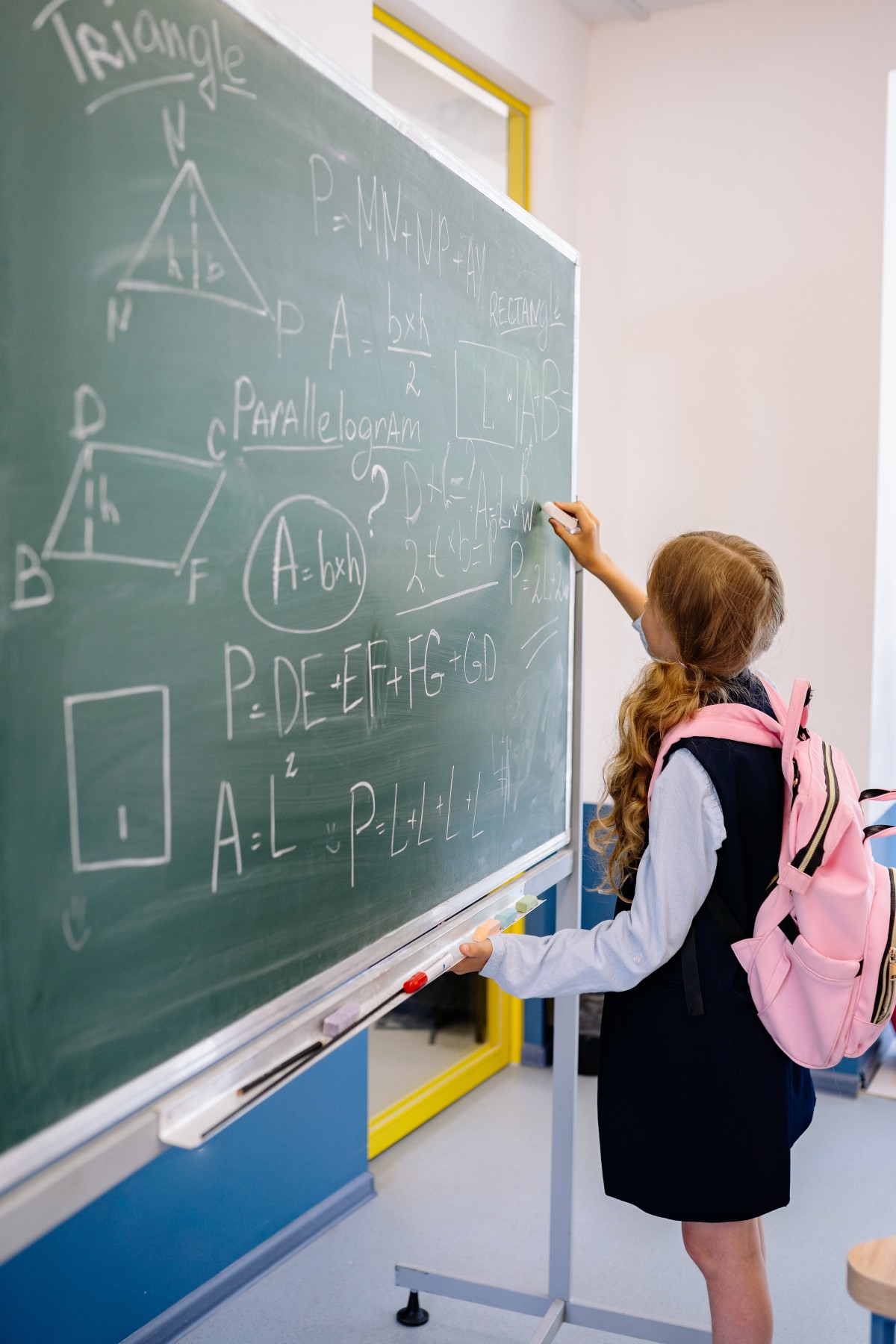
Basic education is minimum compulsory general education.
All children who reach compulsory school age of seven by 1 October of the given year have to start school. Compulsory school attendance lasts until basic education is completed or the child reaches the minimum school leaving age of 17.
The rural municipality government or the town government has a duty to provide basic education for all children of compulsory school age who live within the territory of the town or municipality. The local government designates a school for every child in the area where the child lives. The main criteria for designating a school are the proximity of the school to home, a sibling already attending the same school and, if possible, the parents’ choice of school.
Basic education can be provided by home schooling upon request of a parent or for health reasons.
Distance learning is available for individuals of at least 17 years of age and in special cases and on the recommendation of the advisory commission for younger students.
Before staring school, children’s readiness for school is assessed by pre-school child care institutions (for those children who do not attend a pre-school child care institution, also by regional advisory centres). A parent will submit a school readiness card to the school where their child starts compulsory education.
Children younger than the compulsory school age may also start school if their parents so desire and the advisory commission or the pre-school child care institution which the child is attending has assessed the child’s readiness for school and confirmed that the child is ready for formal instruction.
Each school must accept all children within its catchment area. Parents may also choose a school in another catchment area if that school has places available.
Students are accepted to the school of their place of residence without entry tests. Some schools that provide intensive classes and accept students from across Estonia may use entry tests to determine the abilities and potential of children. In private schools, the school council may establish additional admission criteria.
If a student has previously studied abroad or according to a different curriculum, the teachers’ council of the school decides to which class the student is assigned by taking into account the age of the student and the education that the student has previously acquired.
Parents can request that the admission of their child to school is deferred by one year if the child has not achieved the required readiness for school for health reasons.
The Minister of Education and Research determines the dates of holidays for each academic year. Autumn and spring half term holidays usually last for one week and Christmas holiday for two weeks.
The owner of the school may, at the proposal of the head of school and with the approval of the Board of Trustees, determine different dates for school holidays, provided that there are at least four holidays lasting a total of 12 weeks (including a summer holiday of eight weeks) during an academic year.
The Private Schools Act provides that students must have at least eight weeks of holiday per academic year, of which two weeks must be during the academic year.
The basic school graduation certificate is issued to students who have completed basic education in accordance with the national curriculum and:
- whose school level marks are at least ‘satisfactory’;
- who have carried out a creative project in their third stage of study;
- who have achieved at least ‘satisfactory’ marks for the Estonian language and mathematics exams and for one exam in the subject of their choice.
For further information, look at the national curriculum for basic schools
In simplified education, the basic school leaving certificate is awarded to students whose school level marks are at least ‘satisfactory’, who have sat the school leaving exams in the Estonian language and mathematics as well as in a subject chosen by the school from among the compulsory subjects. The subject and the type of exam are determined by the head of school and communicated to students by 1 February of the given academic year.
Children with special educational needs who have attended coping and nursing classes and have completed their individual study programmes are issued basic school leaving certificates based on the decision of the teachers’ council.
Assessment means systematic collection and analysis of information and providing feedback about the development of a student.
Assessment is the basis for planning further education. There are multiple methods, means and ways of assessing students’ performance.
Students’ knowledge, skills and proficiency are usually assessed on a five-point scale where «5» is «very good», «4» is «good», «3» is «satisfactory», «2» is «poor» and «1» is «weak».
Schools can use a different marking system and for classes 1 to 6 a descriptive marking system that does not use numbers. For further information, look at the national curriculum for basic schools
For further information about the marking system of specific school, notification of marks, retaking of tests and disputing marks see the school’s study programme and internal rules of procedure.
General secondary education
General secondary education is acquired at the upper secondary school level. Upper secondary schools are designed to help students become creative, multi-talented, socially mature and reliable citizens who have discovered a field of endeavour that is best suited to their individual interests and capacities for continuing their future educational path. The study programme at upper secondary school is arranged into mandatory and voluntary courses.
Graduation from upper secondary school requires the student to complete a curriculum consisting of at least 96 individual courses passed at a satisfactory level as a minimum, passing the state exams consisting of the Estonian language or Estonian as a second language, mathematics and a foreign language exam, passing the upper secondary school exam as well as completing a student research paper or practical work during the entire study period.
Attaining general secondary education entitles students to continue their studies at a higher educational institution or to obtain vocational education.
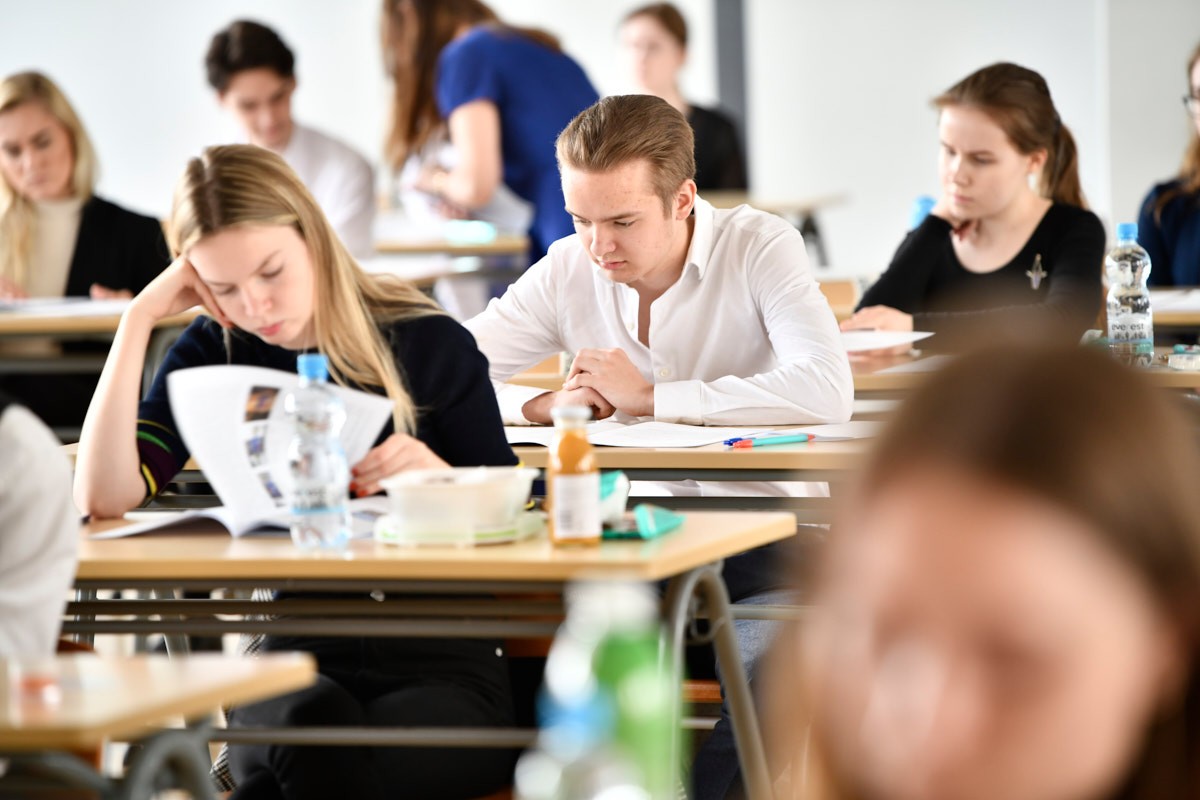
The upper secondary school is a general education school, which follows on from basic school and has a nominal study period of three years.
Upper secondary schools consisting of years 1to 12 (i.e. the study period lasts 12 years) have historically prevailed in Estonia. There are few upper secondary schools specialising solely in the provision of upper secondary education (i.e. years 10 to 12). As of 2010, the Government is actively promoting national upper secondary schools that provide exclusively upper secondary education.
Everyday learning is based on school curricula prepared based on the national curriculum for upper secondary schools.
The prerequisite for entering upper secondary education is the completion of basic education.
The Minister of Education and Research establishes general requirements for entering upper secondary education.
The owner of a school or the head of school authorised by the owner of a school will establish the conditions of and procedure for admission to the school. Admission requirements and procedures are published on the school’s website.
A student can transfer from one upper secondary school to another if the receiving school has vacancies available and the student meets the admission criteria. Student who have interrupted their studies at an upper secondary school have the right to continue their studies in a vocational educational institution. The courses completed before the transfer will be acknowledged. A student can also continue their studies in a part-time study format in an upper secondary school for adults.
Upper secondary schools for adults provide an opportunity to acquire upper secondary education for all adults, primarily in a part-time study format.
Part-time study places more emphasis on independent work and the number of optional courses provided for in the national curriculum for upper secondary schools is smaller; students choose to study only certain subjects, there are no physical education classes and persons who have acquired vocational secondary education may select the courses which are required for state exams or for admission to higher education institutions.
Upper secondary education can also be completed by external studies, i.e. by studying independently and sitting the state exams. Upper secondary schools for adults admit persons who have completed basic education and are at least 17 years old.
The national curriculum for upper secondary schools sets out compulsory subjects and optional courses and their volumes. The school curricula are based on the national curriculum. The subjects and academic study hours are set by the schools based on school-specific priorities.
The minimum mandatory study load is 96 courses in upper secondary schools, spread across three academic years, and 72 courses in part-time secondary educational institutions. The national curriculum sets out subject syllabuses by courses. A course is defined as a 35-hour (@ 45 minutes) study cycle.
The Basic Schools and Upper Secondary Schools Act, adopted in 2010, provides that schools have the right to use the curricula of the International Baccalaureate Organisation and the Convention Defining the Statute of the European Schools. The IBO curriculum has so far been implemented by four schools.
Part-time upper secondary schools and upper secondary schools for students with special educational needs are not required to follow the requirements for volumes of elective courses and subjects stipulated in the national curriculum for upper secondary schools.
Students’ academic performance is assessed on a five-point scale.
The law allows schools to use other marking systems internally but when a student leaves school or is transferred from one school to another, the marks must be converted to the universally recognised five-point format.
Most alternative marking systems have been modelled on those used by higher educational institutions. Upper secondary schools give marks for individual courses and school levels.
Full-time and part-time students who have fulfilled the criteria for completing upper secondary education are given school leaving certificates.
The results of state examinations and the relevant certificates are made available in an electronic format. The data on state examination and school leaving certificates are entered in the national education information system (EHIS), the sub-register of documents certifying education. A state examination certificate is valid only together with a school leaving certificate. A school leaving certificate is valid as a document certifying education even if not accompanied by a results report card and state examination certificate.
According to the Basic Schools and Upper Secondary Schools Act, an academic year runs from 1 September in one year to 31 August in the following year.
Each academic year consists of four terms, half-terms and summer holidays. The terms last at least a total of 175 days (i.e. 35 weeks) or, in the final year, 185 days (37 weeks). While there are no classes on the days of school leaving examinations and two days prior to each examination, these days are included in study days.
The start and end dates of half-terms and summer holidays as well as the dates of basic and upper secondary school leaving examinations are established by the Minister of Education and Research separately for each academic year.
Estonia has a total of eighteen state upper secondary schools that belong in the area of administration of the Ministry of Education and Research.
For the purpose of providing general secondary education in high quality and ensuring a more efficient school network, the Ministry of Education and Research has initiated the establishment of state upper secondary schools where studies are pursued in grades 10-12 in regional centres.
The first so-called regional upper secondary school – the Viljandi Secondary School – started its work on 1 September 2012. A year later the Lääne County Joint Gymnasium started to operate in the town of Haapsalu and Jõgeva County Gymnasium in the town of Jõgeva.
In addition, Nõo Science Gymnasium (specialisation in sciences and nature), Noarootsi Gymnasium (Swedish language and Nordic culture), Tallinn Music High School (grades 1–12, specialisation in music) and Narva Old Town State School (grades 1–12), a language immersion school located in Narva, also operate as state upper secondary schools. These schools admit students from all over the country.
Under the Basic and Upper Secondary Schools Act, each county shall have at least one state upper secondary school by 2023.
Several cooperation agreements on the establishment of new upper secondary schools have been made with the local authorities. According to the plan, new state upper secondary schools will start on 2019 in Kohtla-Järve, 2021 in Kuressaare and Tabasalu, 2022 in Rakvere, Narva and Tallinn and 2023 in Jüri and Tallinn.
Financing
According to the Basic Schools and Upper Secondary Schools Act the school’s running costs will be covered by the school manager. In most cases, this means local governments. Local governments are authorised to establish, re-arrange and close general education schools. Local governments keep account of the number of compulsory attending children, ensure school attendance control, make arrangements for school transport and the provision of school meals and perform a number of related functions.
The number of the students in municipal schools will be used to calculate the amount of state subsidies allocated from the state budget to municipalites. The state subsidy is used for covering expenses on teachers’ salaries, social taxes, training and textbooks. Similar subsidies are also made available to private general education schools as prescribed by the Private Schools Act. In doing so, the state will refrain from prescribing guidelines as to the use of the funds allocated. The local government reserves the obligation and right to finance schools based on their actual needs.
The national curricula establish the standard for basic and general secondary education. The curricula are implemented in all basic and upper secondary schools of Estonia, regardless of the schools legal status, unless otherwise stipulated by the law.
The study processes in the school are based on the schools´ curriculum, which specifies study goals, the values and competences thereby developed, study plans, the arrangements for the provision of support services and grade specific curriculum. The staff of the school is also involved in the development of the schools´curriculum. The school also involves students, parents and members from the other interest groups to the development of the curriculum.
The core of national curriculum introduced at 2014 consists of eight overall competences that are to be cultivated during the study process. The emphasis has shifted from a teacher-centered approach to a student-centered one. In order to guarantee that the students will attain overall competences an interdisciplinary approach has been introduced binding together individual disciplines through the study of common subjects to compliment the individual subjects’ study and pedagogical aims. Competence is defined as a compilation of knowledge, skills, values and opinions, which ensures readiness to engage in lifelong learning and an ability to attain results in a chosen field.
The national curricula are designed to emphasise the differences between the two education stages based on the students’ age groups. This translates into variances in the learning process, evaluation and the elaboration of subject-specific competencies standards. The refocusing of emphasis from teaching to learning is supported by the formative assessment principle designed to help to support the student’s learning process and overall development. It is further emphasised that the learning processes must be designed according to the students’ health and strenght. There is a necessity to use the methodology which takes into consideration every sudents´individuality. Besides the physical learning environment, the importance of the social and mental aspects in the student’s development are emphasized throughout the curricula. Schools and teachers are free to arrange the learning process in a manner that puts the students in the centre of the process as well as based to the school’s speciality and resources.
The curricula designed for basic and upper secondary schools are structured around subject groups. In upper secondary schools, the subjects are divided into courses. The minimum study load required for graduation must encompass at least 96 courses, which are divided between obligatory and optional courses. Subject specific curricula make provisions for opportunities for combining subject-specific and inter-disciplinary approaches through employing cross-curriculum topics and unified approaches to evaluation.
According to the Basic Schools and Upper Secondary Schools Act, it is possible to conduct studies in Estonia by following the curriculum formulated under the aegis of either the International Baccalaureate Organization (IBO) or the Statute of the European Schools. These curricula are designed foremost for the children of the foreign officials and specialists working in Estonia.
In Estonia, the opportunity to study according to the IBO curricula is provided by the Tallinn English College, Miina Härma upper secondary school, Audentes private school and the International School of Estonia.
The Statute of the European Schools serves as the charter for the operations of the Tallinn European School.
Estonia has two schools that operate based on the agreements between countries, one of them being the Kadrioru German Upper Secondary School and the other being the Tallinn Finnish School, which operates under a joint Estonian-Finnish curriculum.
Study based on the IBO curriculums is state sponsored in municipal schools, the Tallinn English College and Miina Härma upper secondary school, whereas in private schools it is the subject to the tuition fees. The tuition fees of the children of European Union officials studying at the European School as well as the tuition fees of children of the European School’s staff members will be covered by the state budget. In other cases, studies at the European School are subject to the tuition fees as stipulated by the school’s charter. Persons willing to apply for admittance must contact the schools directly in order to clarify the terms of enrolment.
Last updated: 30.04.2024
